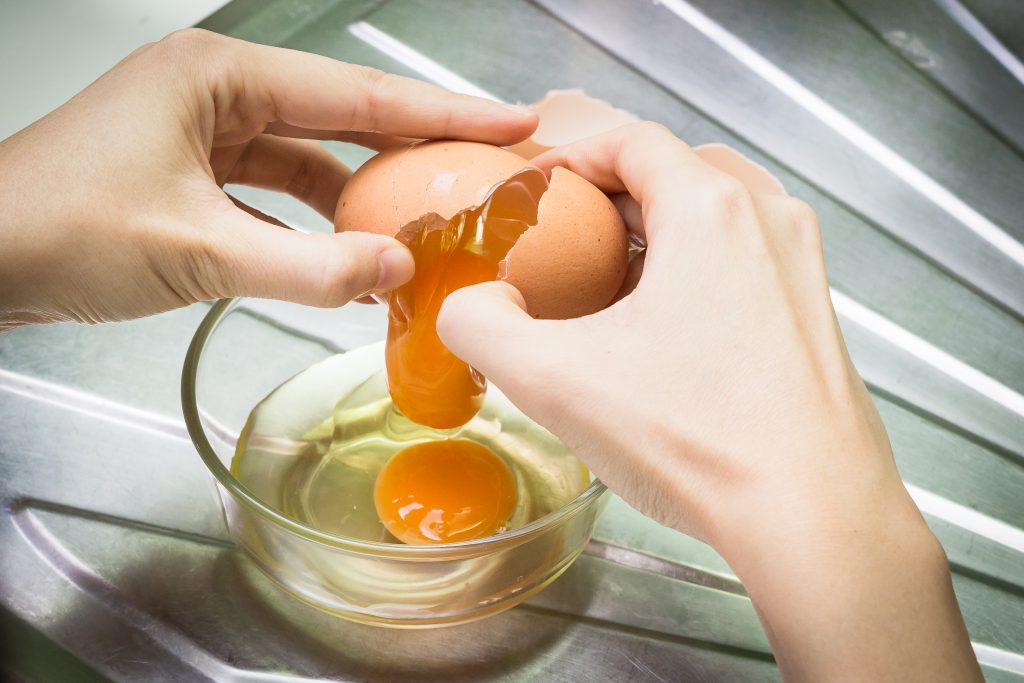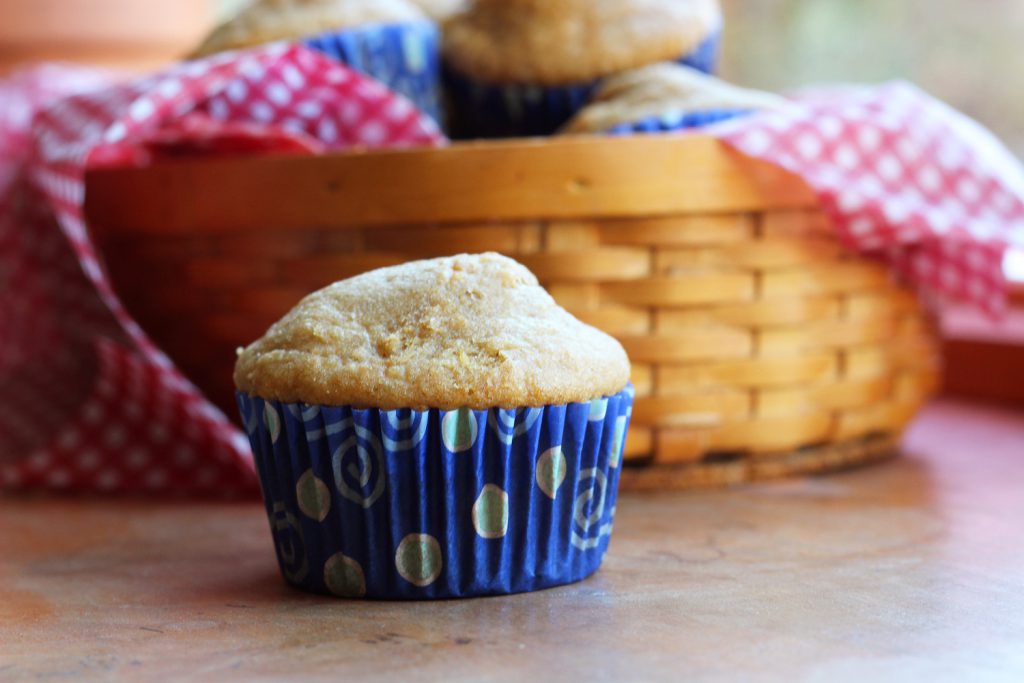Are you feeling a little left out because everyone’s baking such delicious treats and you’re not sure where to start? Not everyone out there is an expert, even if it looks like it on social media. If you’re yearning to get in on the baking action but don’t have any experience, don’t worry: Baking is actually pretty easy.
If you’ve never really tried baking anything before, here are some tips to help guide you, from someone who has learned from oh-so-many mistakes, but had fun along the way.
Assemble Your Ingredients First
Chefs call this “mise en place,” and if you’ve ever watched Worst Cooks in America, you’ve seen Anne Burrell yelling that phrase a lot. All it means is that you take out everything you’re going to need ahead of time (but only on TV do you need to pre-measure everything… in real life, you’re not rushing to get something in the oven before the commercial). Putting everything on the counter where you can see it is the best way to avoid the mid-recipe discovery that you’re missing something essential.
Another tip: put back things as you use them, or at least group them together by where they belong (fridge, pantry, etc.) to return them in batches. It makes cleaning up go a lot faster.
Then, take another cue from Anne Burrell and read the entire recipe all the way through before you start, so you don’t get halfway through before you find out you have to chill the dough for three hours, or use ramekins you don’t have, or do some complicated ritual you’re not ready to commit to.
Measuring Flour
The most accurate way to measure flour (short of weighing it, but who’s doing that?) is to scoop the flour lightly into a measuring cup, being careful NOT to pack it, and then level it off with a knife. Do not reach the cup into the flour and scoop that way; you’ll end up with the wrong amount.
That said, If an expert baker is making something with you, and he or she scoops, just be quiet. Chances are they’ve been at this for years and know what they’re doing—they can probably even just eyeball it, those clever bastards.

Egg Cracking
Crack your eggs on a flat surface instead of an edge. It may seem weird, but it will make you a lot less likely to create shards of shell that can fall into your batter. If you DO drop in a piece of eggshell, the best way to get it out is using another, larger piece of eggshell. It works almost like a magnet, making it a pretty cool trick.
If you really don’t trust yourself, crack the eggs into a separate bowl first, then transfer them into the one with the other ingredients.
No Eggs?
If you run out of eggs, but you have flax seed, you can make flax eggs! I tablespoon ground flax with three tablespoons water = 1 egg. Beat VERY well to get it to a gooey, eggy texture. I realize not everybody has flax around, but if you do, it’ll save the day.
Do NOT, however, make a flax egg omelet, no matter what your significant other suggests every time you declare proudly, “I made a flax egg!”
Speaking of Substitutes…
Yogurt and sour cream are usually interchangeable in recipes, with a few minor exceptions. You can also replace applesauce with yogurt, as long as you’re not looking specifically for an apple-y flavor.
If you want to eat healthier, here’s a trick: for every cup of flour, swap out 1/3 of it for wheat germ, which is incredibly good for you—it’s a superfood!—and even makes baked goods a little fluffier. The reason? Wheat germ is stripped out when they make flour, so all you’re doing is restoring it. But there’s the (very small) catch: The reason they strip it out is because it goes bad when left on the shelf, so once you open a jar of wheat germ, store it in the fridge.
A Note About Sugar
In most cases, you can automatically reduce the amount of sugar a recipe calls for without noticing any difference whatsoever. Start with baby steps: if it says a cup, try just under that. Next time you make the same recipe, try a little less. A lot of bakers tell me they can reduce by a third or even half, and everything still turns out sweet and delicious. It all depends on your sweet tooth, so experiment.
Banana Mashing
I don’t know why every single recipe involving mashed bananas says to use a fork. Use a potato masher! It’s much more efficient and a lot more satisfying.
Spices Are Flexible
Look at the amount of spices in a recipe as a recommendation rather than a hard and fast rule. I always use more cinnamon, usually more nutmeg, and more ginger too. You’ll need to be more careful when it comes to cloves or cardamom, which can easily become overpowering, but anything else can be seasoned to your own taste.
Don’t Overmix
The basics of baking are to get your dry ingredients together in one bowl, your wet ingredients in another, and then combine.
When you do this gently, it’s called “folding,” which you may remember Moira and David being baffled by on Schitt’s Creek. (If you don’t, you need to stop what you’re doing and watch Schitt’s Creek. Bake later.)
The important thing is to be gentle! The easiest way to ruin a batch of muffins is to overmix the batter.
Google Everything
David and Moira should have tried this! Alexis would have.
Google comes in extra handy when I’m trying to figure out a measurement conversion, a last-minute substitute, or try something new. The first time I made meringue cookies and had to whip the egg whites to stiff peaks, I opened a new tab and quickly found a video demonstrating what they should look like. Same thing for scraping a vanilla bean or melting chocolate on the stove. The internet is full of helpful conversions, instructions, and videos to help you in your baking adventures. You’ve never zested? You don’t know how to separate eggs? Google! There’s a video for everything.

Baking Muffins, in Particular
I am the queen of muffins, but this trick came from my friend Marcie taught me this trick, and it’s a good one: one way to get those nice tops on your muffins is to preheat the oven 25 degrees higher than the recipe says. Bake the muffins for five minutes at that temperature, then reduce by that same 25 degrees. This might result in shorter baking times, so keep an eye on them and test early by inserting a toothpick into one of the muffins. If it comes out clean, or with crumbs, you are done.
Speaking of Baking Times…
I took a pastry class once, and the chef teaching it gave me a valuable piece of advice, which is not to trust the baking times in recipes. It varies tremendously from one oven to another, from one geographical location to another, so set your timer for a lot earlier than the recipe says and keep checking. Don’t trust a recipe-writing stranger who has never been in your kitchen to know the specifics of your oven.
Ask Your Experts
If anyone in your life bakes, ask them questions! Better yet, bake with them, although you’ll have to do that virtually for a while. All longtime bakers have great tricks to share, and some of them go against conventional wisdom and work beautifully.
Don’t Be Afraid to Fail
The only way to learn is to fail. It’s not even really failing… unless you never try again.



